Changes in Guangzhou, since Lin Zexu
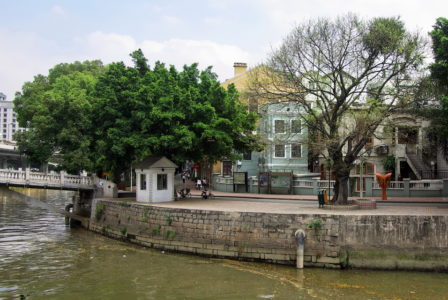
I chose to visit Shamian Island in the heart of Guangzhou earlier this year in February (2009). My ethnic roots are British, so I have an interest in tracing the history of the British presence in the world, and in China too.
The British in Guangzhou, however, were not exactly the models we should try to emulate. In fact, the British decision to push opium in China is not the image of business ethics that we feel proud about. Wars have always been part of the power struggles between states, but attempts in recent years to achieve change and agreements through more peaceful means would seem to be a huge step forward for all of us. It seems to me that Lin Zexu did his best to achieve an end to the opium trade without violence. He deserves to be regarded as a hero.
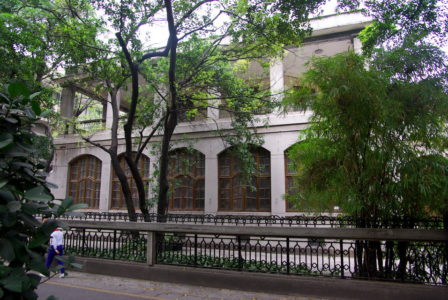
As I continue to learn more of the history of China and get to meet more of her fine people, I sense much empathy for the Chinese and their history of struggle at the hands of foreigners. What is now known as the Hundred Years of Humiliation began with the Opium Wars of the mid-1800s. The sense of humiliation seems to be burned into the psyche of all Chinese. I understand their strong desire, at long last, to close the door on that difficult period.
And, yet, it is history. It is something not to be ignored. There are ways to understand history that give us wisdom and strength to deal with the present and future. I find it interesting to watch how Chinese deal with their history. My visit to Shamian Island in Guangzhou… the enclave where the British and the French chose to create their trading presence… provides some opportunities to see Chinese people connecting with this period of attempted foreign domination.
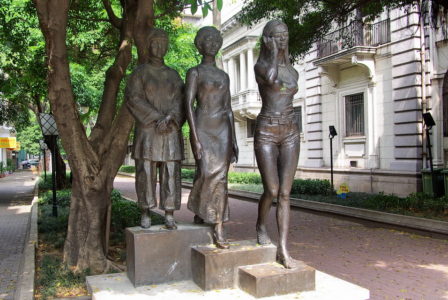
Sometime I want to learn more about the artists who create the many bronze sculptures that can be seen on the streets of Chinese cities (including the Island of Shamian). I enjoy the attitudes of acceptance towards foreigners that is often conveyed in these images. Whether it is the new clothing styles adopted by the young ladies in China, or the playful portrayal of Chinese interacting with foreigners, there is often light-hearted acceptance of the historical differences and a positive portrayal of the newer (more foreign) ways.
But Shamian Island is mostly about British attempts to both coax and force China to be more open to external trade and influence.
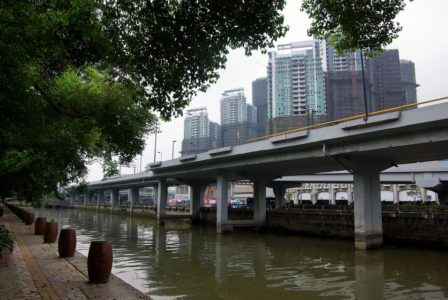
While the British had their time of dominance in China, it is now a much different world. I wonder what the British colonialists would think of the view off Shamian Island today. The energy and scope of development in China is staggering to those of us in the West who think we are used to change. While the British came to promote trade, the tables are now turned as China increasingly dominates trade in the world. Moreover, its capacity for development and change appears to be expanding exponentially.
It would be fun to think of using time-warp technology to bring back some of these old colonialists, and have them gaze out from Shamian Island to view the phenomenal growth and development of modern day Guangzhou.
I have an album of photos from my visit to Shamian Island. Click the link below to view:
Album: My Visit to Shamian Island (Guangdong)
A version of this was first published in another blogging system by Prof Ron 2009 05.
First posting on CanadianDragonfly.net 2009 11 15
Latest update: 2016 09 08
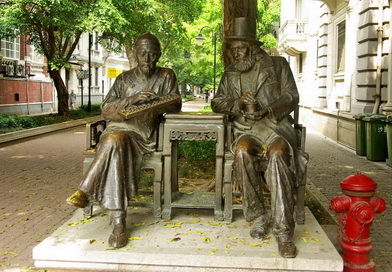
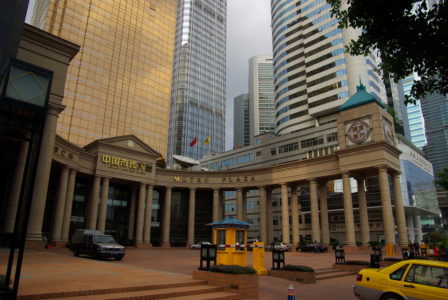
thanks for the insight for a Chinese who didn’t have been there.though I can not understand the whole meaning in the article,in an eyesight of a Chinese,I can konw the most.I will read every essay you upload.Best wishes.